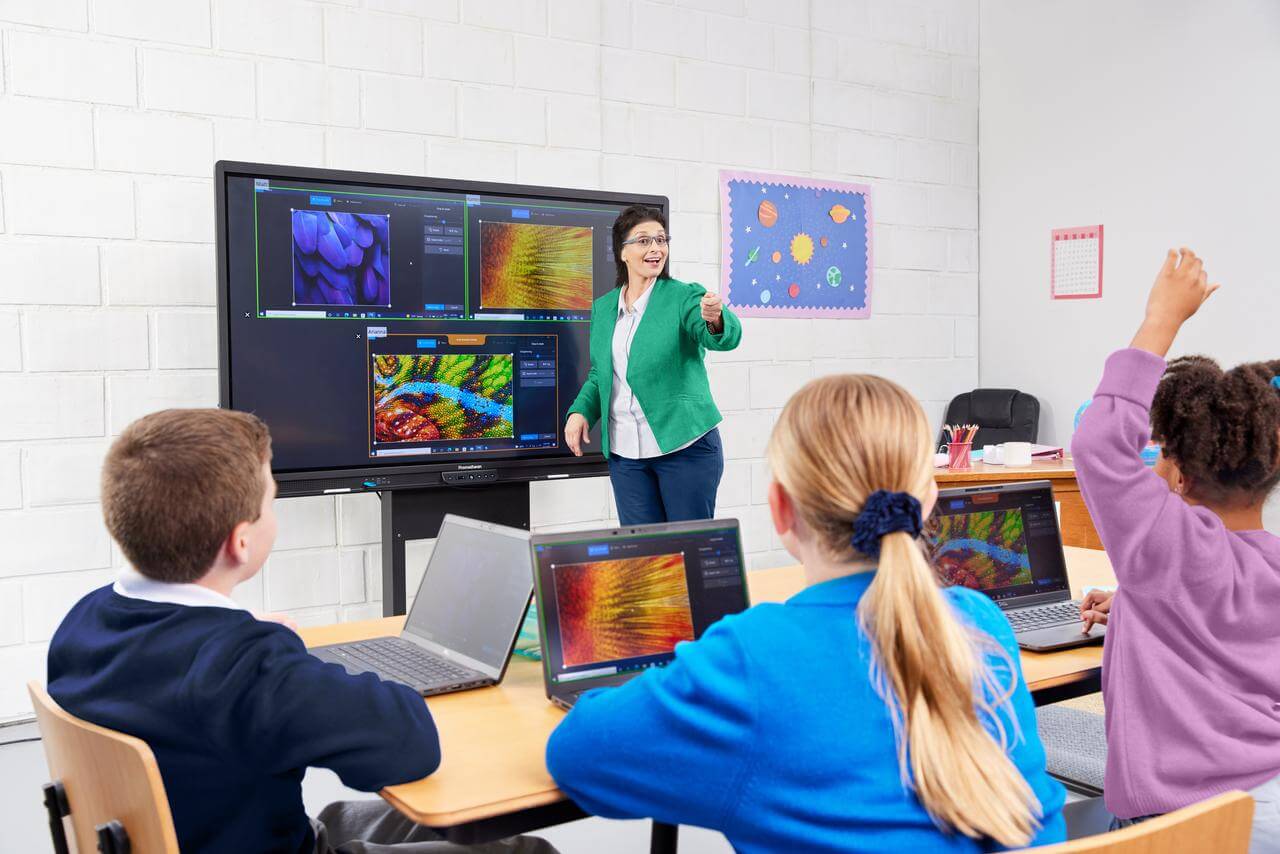Boost Your Child’s Confidence with Primary Science Tuition Singapore
Boost Your Child’s Confidence with Primary Science Tuition Singapore
Blog Article
A Comprehensive Overview to the Various Learning Approaches in Main Science Instruction
The exploration of diverse knowing techniques in key scientific research instruction presents a chance for teachers to boost pupil engagement and comprehension substantially. By checking out hands-on learning techniques, inquiry-based methods, and collective techniques, we can identify efficient methods that provide to different discovering designs.

Hands-On Discovering Strategies
Hands-on learning techniques play a critical function in key scientific research guideline, engaging students in energetic exploration and experimentation. These methods allow students to interact straight with sensations and products, promoting a much deeper understanding of scientific concepts. By utilizing manipulatives, designs, and real-life experiments, teachers create an environment where students can observe, assume, and examine their concepts.
Such strategies not only enhance comprehension but additionally grow essential reasoning and analytical skills. When students take part in activities like building simple equipments, growing seeds, or carrying out chain reactions, they are encouraged to ask inquiries and look for responses through their very own monitorings. This experiential method helps to debunk complicated scientific concepts, making them much more easily accessible and relatable.
Furthermore, hands-on understanding promotes collaboration amongst peers, as students often function in teams to perform experiments or share findings. This synergy not only improves their discovering experience but additionally develops crucial social skills. Ultimately, incorporating hands-on techniques in key science guideline fosters a long-lasting love of discovering and curiosity concerning the environment, laying a strong structure for future academic quests in science and beyond.
Inquiry-Based Learning
Inquiry-based knowing is an educational method that urges students to ask concerns, explore phenomena, and build their very own understanding of scientific ideas. This approach shifts the focus from typical teacher-led instruction to a much more student-centered experience, where students take the initiative in their academic trip. By cultivating curiosity, inquiry-based knowing advertises much deeper involvement with the material, allowing students to check out subjects in a meaningful context.
In technique, this method frequently includes hands-on experiments, monitorings, and crucial thinking activities that align carefully with the scientific method. Trainees are urged to formulate hypotheses, layout examinations, and examine information, which grows vital abilities such as logical and analytic reasoning. The function of the educator in this framework is to assist in exploration, directing trainees through the inquiry procedure while urging independent idea and cooperation.
In addition, inquiry-based understanding supports a sense of ownership over the learning procedure, inspiring trainees to go after understanding actively. This approach not just enhances understanding of clinical ideas but additionally cultivates a lifelong love for knowing, equipping pupils with the skills necessary to browse a significantly intricate globe.
Collaborative Knowing Approaches
Collective understanding methods equip pupils to engage in purposeful interactions with peers, promoting a common duty for their educational outcomes. In main scientific research guideline, these strategies encourage students to interact to check out clinical ideas, address troubles, and conduct experiments (primary science tuition Singapore). By joining group activities, trainees can take advantage of varied viewpoints, permitting richer understanding and retention of clinical expertise
One key aspect of collaborative learning is the emphasis on interaction abilities. Pupils must articulate their thoughts, pay attention proactively to others, and bargain concepts, every one of view website which are essential proficiencies in both real-world and academic contexts. This social interaction not only boosts their understanding of clinical concepts however likewise promotes teamwork and dispute resolution abilities.
When trainees see the worth of their contributions within a group, they are extra likely to take possession of their learning journey. Overall, incorporating collective discovering approaches in primary science instruction cultivates a dynamic knowing setting that prepares pupils for future academic and social difficulties.
Technology Combination in Scientific Research
The integration of technology in key science direction improves finding out experiences by providing innovative tools and resources that sustain numerous training techniques, including collaborative knowing - primary science tuition Singapore. The usage of electronic systems, simulations, and interactive applications permits pupils to involve deeply with clinical principles, promoting a more hands-on approach to knowing
Online labs, for circumstances, allow learners to carry out experiments safely and effectively, promoting inquiry-based discovering. These tools can replicate real-world scientific scenarios, allowing students to visualize complex procedures that would certainly be tough to reproduce in a typical class setting. Moreover, innovation fosters communication and collaboration among pupils, as they can share searchings for and interact on tasks with online platforms.
In addition, multimedia presentations and educational video clips can enrich lessons by providing to diverse discovering styles, making abstract principles a lot more available. Information analysis devices likewise encourage trainees to collect and analyze scientific information, reinforcing critical believing skills. Generally, the strategic unification of technology in main scientific research guideline not only improves engagement yet also prepares trainees for a highly sophisticated culture, equipping them with crucial skills for future scientific undertakings.
Distinguished Direction Approaches
Distinguished direction approaches are important for attending to the varied needs of students see this page in primary scientific research education. These methods enable instructors to customize their training methods to suit differing capabilities, passions, and learning styles within the classroom. By employing differentiated direction, instructors can produce a comprehensive setting that cultivates interaction and boosts understanding of clinical concepts.
One efficient technique is to utilize versatile grouping, which allows students to collaborate with peers at similar ability degrees or with varying viewpoints. This strategy urges peer learning and advertises critical reasoning. In addition, using options in projects can empower students, enabling them to choose projects that reverberate with their passions while still satisfying curricular goals.
Moreover, incorporating tiered jobs is an additional important technique. By creating jobs with varying degrees of complexity, educators can make certain that all pupils are properly tested, no matter their proficiency. Utilizing formative assessments to determine comprehending further makes it possible for teachers to readjust their training methods dynamically, making sure that each learner obtains click for more info the support they require.
Ultimately, applying separated instruction methods in primary scientific research education and learning not only boosts student understanding results yet likewise grows a passion for scientific research, preparing students for future academic searches.

Verdict
In summary, reliable main scientific research direction demands a multifaceted strategy that encompasses hands-on understanding, inquiry-based techniques, and joint techniques. The combination of technology and separated instruction additionally provides to diverse discovering designs, fostering an atmosphere for exploration and important reasoning. By executing these techniques, instructors can enhance student interaction and understanding, inevitably nurturing a lifelong enthusiasm for scientific research and questions. Such comprehensive methods are essential for developing informed and interested future scientists.
The exploration of diverse learning methods in primary scientific research guideline offers a possibility for teachers to improve trainee engagement and comprehension significantly.Hands-on learning strategies play a crucial duty in main science instruction, involving trainees in active expedition and testing.Inquiry-based discovering is an instructional approach that urges trainees to ask questions, explore phenomena, and build their very own understanding of scientific principles.Collective knowing approaches encourage pupils to involve in significant interactions with peers, promoting a shared duty for their academic end results. Overall, integrating joint discovering methods in key science guideline cultivates a vibrant learning setting that prepares students for future academic and social obstacles.
Report this page